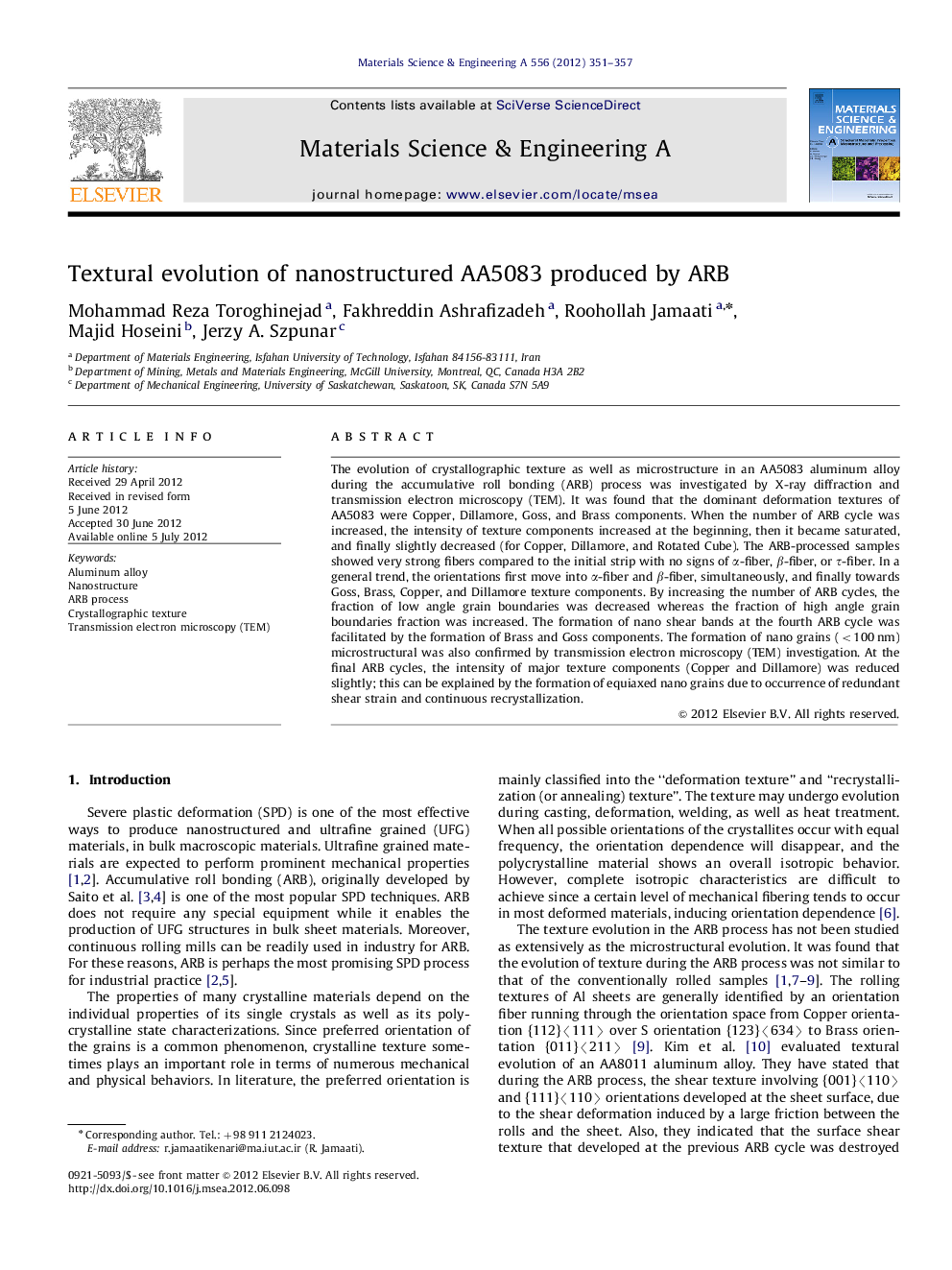| کد مقاله | کد نشریه | سال انتشار | مقاله انگلیسی | نسخه تمام متن |
|---|---|---|---|---|
| 1577064 | 1514787 | 2012 | 7 صفحه PDF | دانلود رایگان |

The evolution of crystallographic texture as well as microstructure in an AA5083 aluminum alloy during the accumulative roll bonding (ARB) process was investigated by X-ray diffraction and transmission electron microscopy (TEM). It was found that the dominant deformation textures of AA5083 were Copper, Dillamore, Goss, and Brass components. When the number of ARB cycle was increased, the intensity of texture components increased at the beginning, then it became saturated, and finally slightly decreased (for Copper, Dillamore, and Rotated Cube). The ARB-processed samples showed very strong fibers compared to the initial strip with no signs of α-fiber, β-fiber, or τ-fiber. In a general trend, the orientations first move into α-fiber and β-fiber, simultaneously, and finally towards Goss, Brass, Copper, and Dillamore texture components. By increasing the number of ARB cycles, the fraction of low angle grain boundaries was decreased whereas the fraction of high angle grain boundaries fraction was increased. The formation of nano shear bands at the fourth ARB cycle was facilitated by the formation of Brass and Goss components. The formation of nano grains (<100 nm) microstructural was also confirmed by transmission electron microscopy (TEM) investigation. At the final ARB cycles, the intensity of major texture components (Copper and Dillamore) was reduced slightly; this can be explained by the formation of equiaxed nano grains due to occurrence of redundant shear strain and continuous recrystallization.
Journal: Materials Science and Engineering: A - Volume 556, 30 October 2012, Pages 351–357